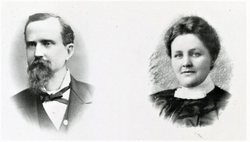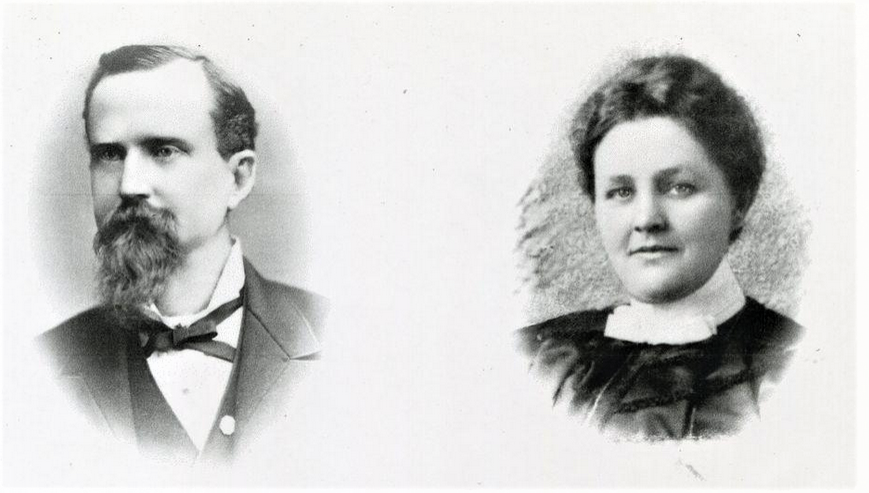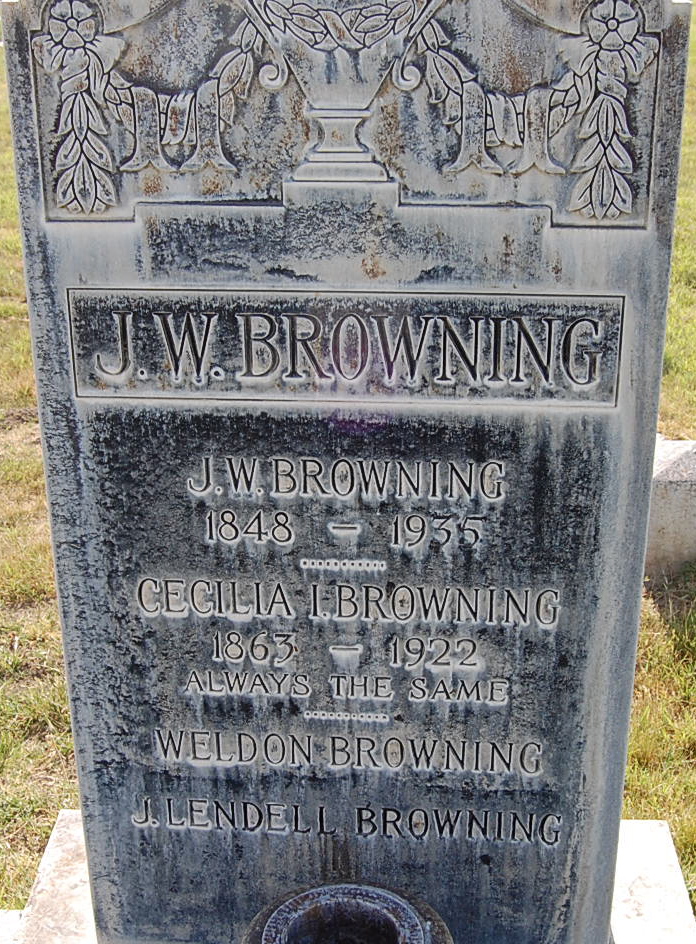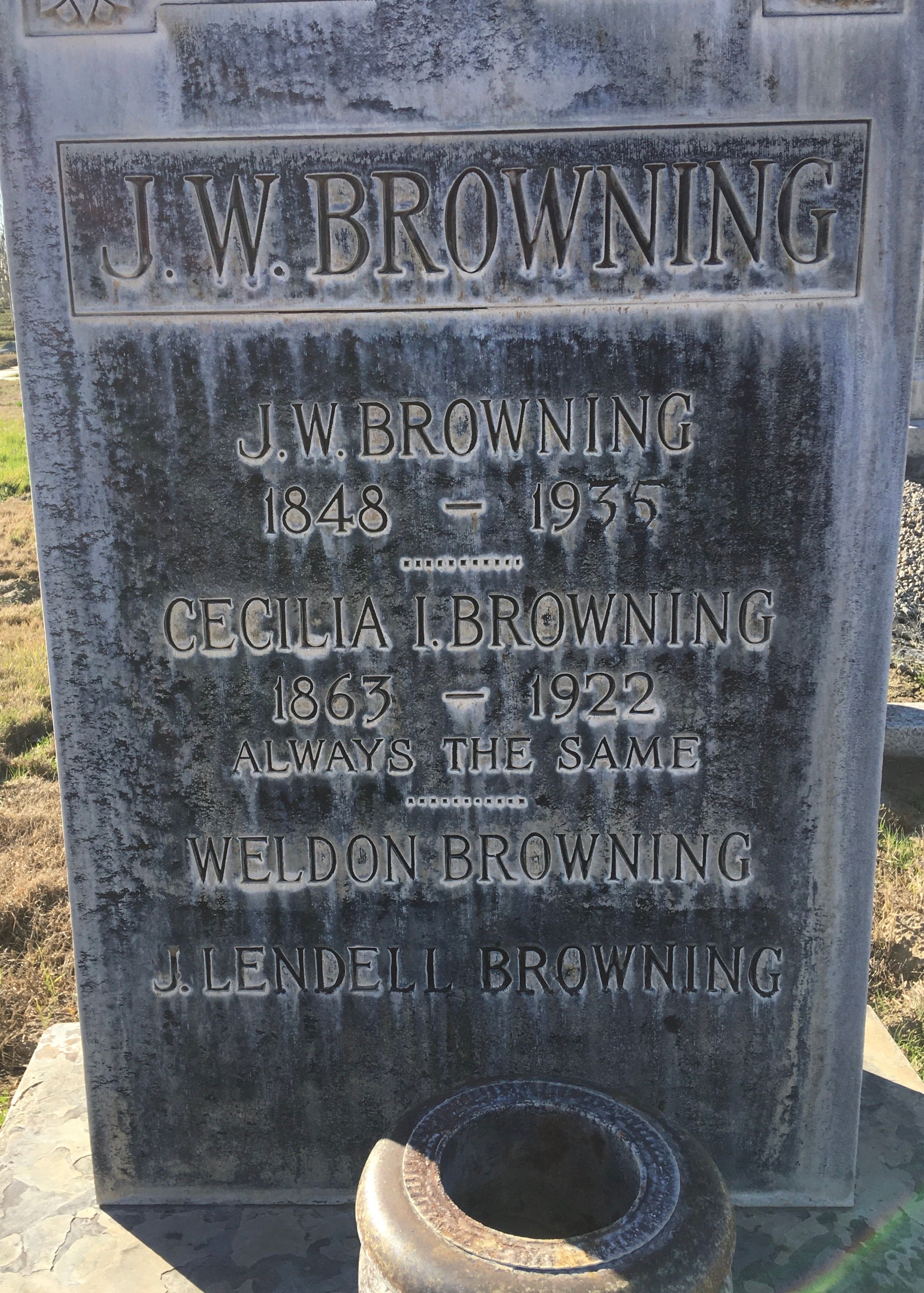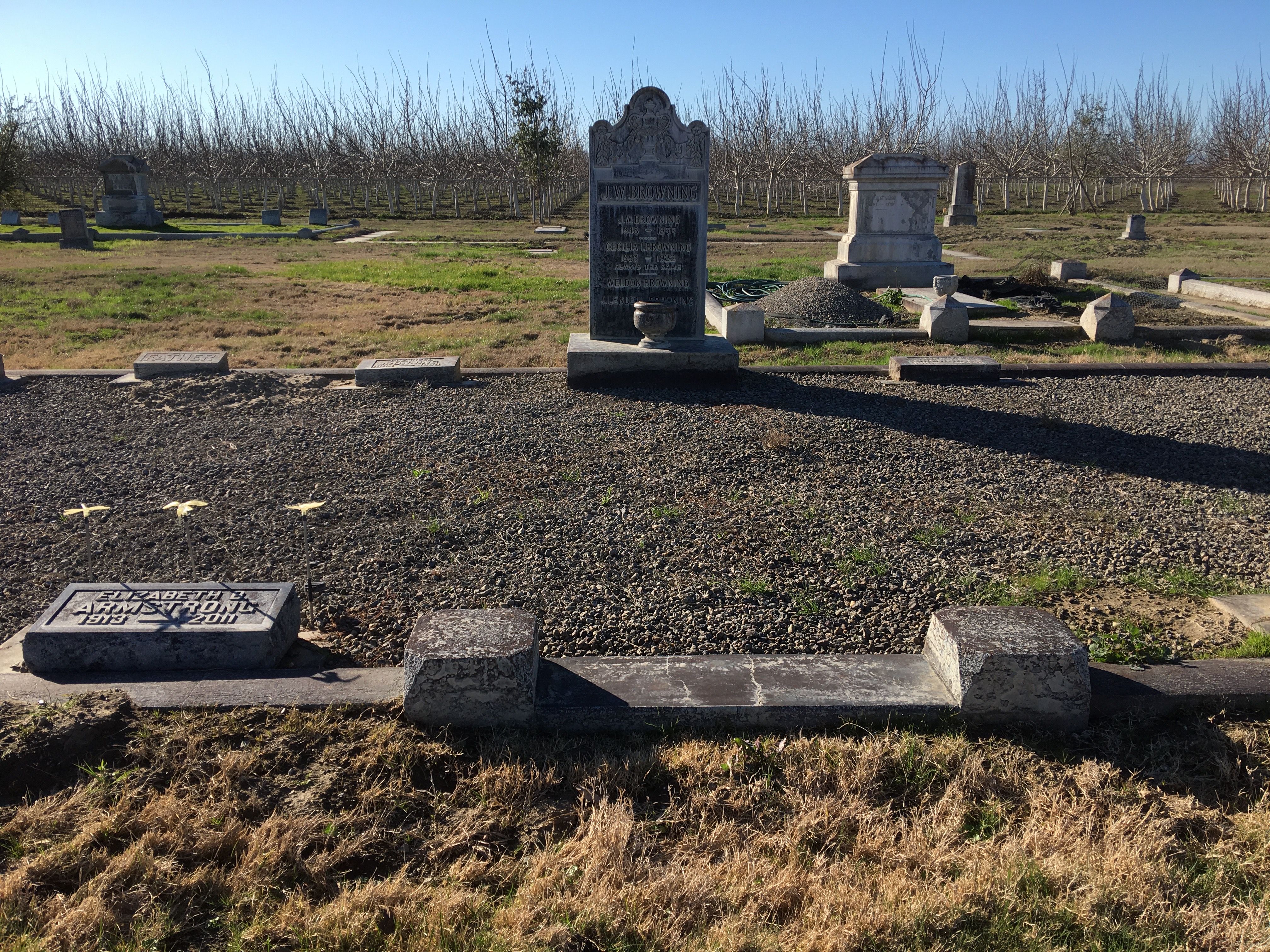*********
"John W. Browning was one of Colusa County’s earliest settlers and most colorful and largest landowners and livestock men.
At one time he had more than 25,000 acres under cultivation and was one of the pioneers in successful commercial rice farming. His father came to Colusa in 1849. John was the only white child for miles around and he received much attention from the vaqueros carrying bowie knives who worked for his father. He used to recount about his experiences as a boy riding the great unfenced valley floor, even to Willows to help cowboys gather his father’s cattle.
John Browning acquired from 15,000 to 20,000 acres of range land in western Colusa County where he wintered his cattle, taking them to valley stubble fields in summer. He died in 1935.
Browning’s three children, J. Lendell Browning, Elna Schohr and Aileen Armstrong, formed The Browning Company, increased the cattle numbers and, for a time, had a feed yard near west Butte in Sutter County, the first one in this area. Some of the Browning properties are now owned and operated by the Browning heirs.
As a boy of 10 years, Browning was recognized by stockmen as capable of doing a man’s work in the saddle. As a young man, Browning owned one of the first warehouses on the Sacramento River, Eddy’s Landing at Grand Island.
Despite his youth, Browning’s business ability and his able management attracted attention. Colonel George Hagar, one of the richest men in Colusa County, asked him to operate his properties in Reclamation District 108. Colonel Hagar owned 40 miles of land along the Sacramento River in Colusa and Yolo Counties. Browning was only 16 or 17 years of age when the land was turned over to his management. Gradually, Browning began buying land of his own. Hagar advanced him money to make purchases at various times. The Browning holdings began in a small way to take shape.
Browning was a trustee of Reclamation District 108 for 30 years and was president for eight or nine years. At one time he owned 30,000 acres of land in the Sutter Basin, but his holdings in the district in recent years amounted to only 7,000 acres.
The first hogs Browning raised he shipped by barge from Grimes to Sacramento. He reclaimed thousands of acres of land in the Sacramento Valley, making it productive. His experience in Reclamation District 108 proved valuable to him in formation of Reclamation District 833, on which he served as chairman of the board.
When the district had difficulty in disposing of its warrants he purchased $700,000 worth.
J.W. made two trips to Louisiana to learn details of how reclamation districts were operated there. He took over the Balfour Guthrie Ranch, the old Chappell property, near Butte Creek along Gridley-Colusa Road in about 1910. It consisted of 5,520 acres. Barley and wheat were bringing low prices and the previous owners had abandoned efforts to raise these grains and had gone into the cattle business. Cattle also was bringing in little profit and the owners decided to plant rice.
They were told that rice could not be grown successfully in California, but this did not daunt them and they set out 100 acres as an experiment. It was the 1600 variety.
Browning harvested the rice in 1910 after he had taken taken over the property.
It yielded slightly more than 100 sacks to the acre. The next year he planted several hundred acres which averaged 80 sacks to the acre and which sold for about two cents a pound. He continued to plant rice, and the third year the plantings had reached 1,000 acres. In the meantime, his success began attracting attention.
Following his lead, other land owners began planting rice near Willows.
Stories of cattle and hog drives from the Browning Ranch, to the railhead at Gridley have been told for years." Source: Siskiyou Daily.
Contributor: LBN (49278253)
*********
"John W. Browning was one of Colusa County’s earliest settlers and most colorful and largest landowners and livestock men.
At one time he had more than 25,000 acres under cultivation and was one of the pioneers in successful commercial rice farming. His father came to Colusa in 1849. John was the only white child for miles around and he received much attention from the vaqueros carrying bowie knives who worked for his father. He used to recount about his experiences as a boy riding the great unfenced valley floor, even to Willows to help cowboys gather his father’s cattle.
John Browning acquired from 15,000 to 20,000 acres of range land in western Colusa County where he wintered his cattle, taking them to valley stubble fields in summer. He died in 1935.
Browning’s three children, J. Lendell Browning, Elna Schohr and Aileen Armstrong, formed The Browning Company, increased the cattle numbers and, for a time, had a feed yard near west Butte in Sutter County, the first one in this area. Some of the Browning properties are now owned and operated by the Browning heirs.
As a boy of 10 years, Browning was recognized by stockmen as capable of doing a man’s work in the saddle. As a young man, Browning owned one of the first warehouses on the Sacramento River, Eddy’s Landing at Grand Island.
Despite his youth, Browning’s business ability and his able management attracted attention. Colonel George Hagar, one of the richest men in Colusa County, asked him to operate his properties in Reclamation District 108. Colonel Hagar owned 40 miles of land along the Sacramento River in Colusa and Yolo Counties. Browning was only 16 or 17 years of age when the land was turned over to his management. Gradually, Browning began buying land of his own. Hagar advanced him money to make purchases at various times. The Browning holdings began in a small way to take shape.
Browning was a trustee of Reclamation District 108 for 30 years and was president for eight or nine years. At one time he owned 30,000 acres of land in the Sutter Basin, but his holdings in the district in recent years amounted to only 7,000 acres.
The first hogs Browning raised he shipped by barge from Grimes to Sacramento. He reclaimed thousands of acres of land in the Sacramento Valley, making it productive. His experience in Reclamation District 108 proved valuable to him in formation of Reclamation District 833, on which he served as chairman of the board.
When the district had difficulty in disposing of its warrants he purchased $700,000 worth.
J.W. made two trips to Louisiana to learn details of how reclamation districts were operated there. He took over the Balfour Guthrie Ranch, the old Chappell property, near Butte Creek along Gridley-Colusa Road in about 1910. It consisted of 5,520 acres. Barley and wheat were bringing low prices and the previous owners had abandoned efforts to raise these grains and had gone into the cattle business. Cattle also was bringing in little profit and the owners decided to plant rice.
They were told that rice could not be grown successfully in California, but this did not daunt them and they set out 100 acres as an experiment. It was the 1600 variety.
Browning harvested the rice in 1910 after he had taken taken over the property.
It yielded slightly more than 100 sacks to the acre. The next year he planted several hundred acres which averaged 80 sacks to the acre and which sold for about two cents a pound. He continued to plant rice, and the third year the plantings had reached 1,000 acres. In the meantime, his success began attracting attention.
Following his lead, other land owners began planting rice near Willows.
Stories of cattle and hog drives from the Browning Ranch, to the railhead at Gridley have been told for years." Source: Siskiyou Daily.
Contributor: LBN (49278253)
Family Members
Sponsored by Ancestry
Advertisement
Records on Ancestry
Advertisement
